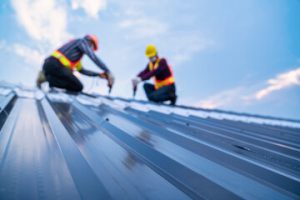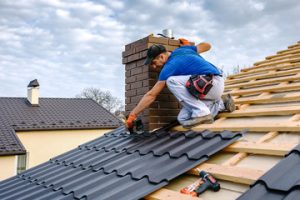Roofing Helena MT has become more than just covering a house. It’s now a vital layer of efficiency and innovation. Modern roofs combine function, design, and intelligence. They adapt to changing environments and needs.

There is growing demand for roofing that reacts to temperature. Materials now expand or contract to control heat. These dynamic surfaces reduce internal energy use. Homes stay cooler or warmer without much effort.
Green roofs are gaining momentum in modern design. They combine soil, vegetation, and membrane layering. These roofs reduce runoff and support biodiversity. Urban areas become more breathable with them.
Solar-integrated roofing is no longer a futuristic idea. It’s built directly into tile and sheet surfaces. These generate electricity without separate panels. The roof becomes an invisible power plant.
Noise-reducing roof layers are emerging in busy zones. Acoustic membranes absorb outside sound effectively. This innovation is subtle but powerful. Roofs now contribute to peace and comfort.
Smart coatings on roofing materials change color. These shifts reflect sunlight or absorb heat depending on need. The result is a roof that adjusts itself daily. Efficiency is managed through science, not luck.
Fire-resistant roofing is becoming more advanced. Composite materials can withstand extreme temperatures. Homes are better protected in fire-prone areas. The roof acts as a strong line of defense.
Digital sensors are being embedded into new roof designs. They monitor moisture, movement, and UV damage. These readings help detect problems early. Maintenance becomes proactive instead of reactive.
Lightweight composite roofs offer new freedom in design. They mimic traditional looks but weigh far less. This reduces structural stress over time. Smaller homes benefit greatly from these materials.
Skylight systems are evolving with smart tinting. Glass adjusts based on sunlight levels. This controls brightness and reduces indoor heat. Nature and comfort are now in balance.
Foldable roofing modules are being tested in temporary setups. These expand and retract based on weather. They offer shelter when needed and open views otherwise. Flexibility adds both value and function.
Drone-assisted roof inspections are becoming common. These devices scan for cracks or uneven areas. Results are analyzed by AI for faster diagnosis. Homeowners make quicker, informed decisions.
Recycled materials are being used more creatively. Roofs now contain elements from reclaimed plastics and metals. These reduce waste and support circular economies. Environmental impact decreases with every sheet.
Rain-harvesting roofing designs are integrated from the start. Channels direct water to storage tanks automatically. This system helps with irrigation and greywater supply. Roofing plays a role in sustainability goals.
Modular roof units are assembled off-site for efficiency. This shortens installation time dramatically. Each module fits like puzzle pieces. Construction becomes cleaner and more controlled.
Architectural roofing styles now include biomimicry. Designs follow patterns found in nature. They shed water like leaves or regulate heat like animal fur. Roofing learns from evolution and adapts it.
Roof lighting systems are becoming embedded within materials. Tiny diodes light up automatically at night. No separate fixtures are needed anymore. Safety and visibility rise with this upgrade.
Energy-absorbing roofs are being explored for kinetic use. Wind or vibration is converted into small amounts of power. These features work quietly during storms. Micro-energy generation begins overhead.
Color psychology is now entering roofing design. Specific shades influence interior moods. Cooler tones calm, while warmer ones energize. The roof impacts more than just protection—it affects behavior.
Snow-resistant layering techniques are being refined. Roofs can now melt snow using conductive materials. This prevents buildup and reduces collapse risks. Winter maintenance becomes much easier.
Structural integration with solar shading devices is growing. Roofs extend to form shade canopies. These reduce glare on windows and cool interiors. The design connects horizontal and vertical needs.
Homeowners now demand roofs that reflect lifestyle. Custom textures and shapes are offered more widely. Roofs no longer copy standard styles. They match identities and unique visual tastes.
Virtual tools help users visualize roofing outcomes. Augmented reality shows finishes before construction. Choices are made with confidence and creativity. Technology bridges design and decision-making.
Storm-adaptive roof shingles can now resist impact. They’re built with layered shock-absorbing membranes. This technology prevents cracks from hail or debris. Roofs survive harsh weather with ease.
Invisible gutter systems are hidden beneath edges. They drain water discreetly without bulky piping. Aesthetic lines remain smooth and uninterrupted. Elegance now coexists with practicality.
Low-angle roof designs are being re-engineered. They manage drainage better through micro-channels. This solves problems in modern minimalist houses. Function meets flat-roof fashion effectively.
New roof anchors make solar panel upgrades easier. Hooks are preinstalled for future use. Panels snap on quickly when needed. Expansion becomes seamless and efficient.
Cork-infused roofing is being explored for insulation. It regulates temperature naturally and is lightweight. This innovation is renewable and biodegradable. Roofing meets comfort with minimal impact.
Metal roofing now includes flexible wave structures. These disperse rain sound for quieter interiors. Acoustic control is built into the shape. Form and silence are designed together.
Self-cleaning tiles use photocatalytic coatings. Dirt and dust dissolve under sunlight exposure. Maintenance is reduced drastically. These roofs keep their appearance over time.
Wind-channeling roofs redirect airflow strategically. They cool homes by guiding natural breezes inside. This reduces reliance on mechanical fans. Cooling is done through passive roof design.
Custom roof edges now include wildlife-friendly spaces. Birds or pollinators find shelter near eaves. Roofing supports local ecology silently. Homes coexist better with natural surroundings.
Thermal imaging tools help detect hidden leaks. These devices see what the eye can’t. Quick scans reveal heat or water loss zones. Repairs are done before problems grow.
Edible roofing is appearing in urban spaces. Soil beds support herbs or small vegetables. These grow safely atop buildings. Food and shelter merge innovatively.
Noise-insulated roof decks support city relaxation. Lounges are added without sacrificing quiet. Materials absorb ambient street sounds. Social zones expand upward without chaos.
Vertical roof gardens now include modular layers. Plants grow in trays stacked with drainage systems. These modules snap into roof surfaces. Living greenery is now an easy add-on.
Seamless roof-to-wall transitions improve weather protection. Flashing and seals are embedded within panels. Water doesn’t pool at junctions anymore. The structure remains dry and strong.
Non-reflective coatings reduce glare on rooftops. This helps in densely packed areas. Rooftops no longer blind neighbors or pedestrians. Urban environments remain visually comfortable.
AI-powered roofing assistants track wear over time. These systems study temperature shifts and structural stress. Suggestions are given to owners via app. Smart homes now include smart roofs.
Ventilation ridges are being reimagined for better airflow. They allow fresh air without pest intrusion. Hot air escapes naturally without fan use. Passive cooling stays consistent year-round.
Living roofs are designed for flood prevention too. Sponge-like soil absorbs excessive rain quickly. Overflow is released slowly to the ground. This minimizes downstream water stress.
Flexible panel roofing adapts to shifting buildings. These systems bend slightly without cracking. Ideal for earthquake-prone zones or aging structures. Stability is enhanced with movement tolerance.
Lightning-resistant rooftops use layered conductive mesh. These redirect strikes toward safe grounding points. Sensitive equipment inside remains protected. Roofing becomes a barrier against nature’s extremes.
Waterproof membranes are evolving to become breathable. They block rain but allow trapped vapor to exit. This reduces mold growth in attic spaces. Roofs now breathe while staying sealed.
Low-pitch roofs are regaining interest in energy-saving designs. Their slope supports passive solar heat gain. Interior temperatures remain balanced throughout seasons. Roofing shape contributes directly to comfort.
Translucent roofing materials are now UV-filtering. Natural light is let in without harmful rays. These work well in garden sheds and sunrooms. Roofing turns into a soft daylight source.
All-weather roofing now includes thermochromic indicators. Color shifts alert owners to climate risks. Roofs become visual indicators of weather severity. Awareness starts with a glance upward.
Homes today demand more from their rooftops than ever before. Innovations respond to climate, energy, and beauty. Roofing has moved from being passive to being responsive. The roof above is now the mind of the house.
